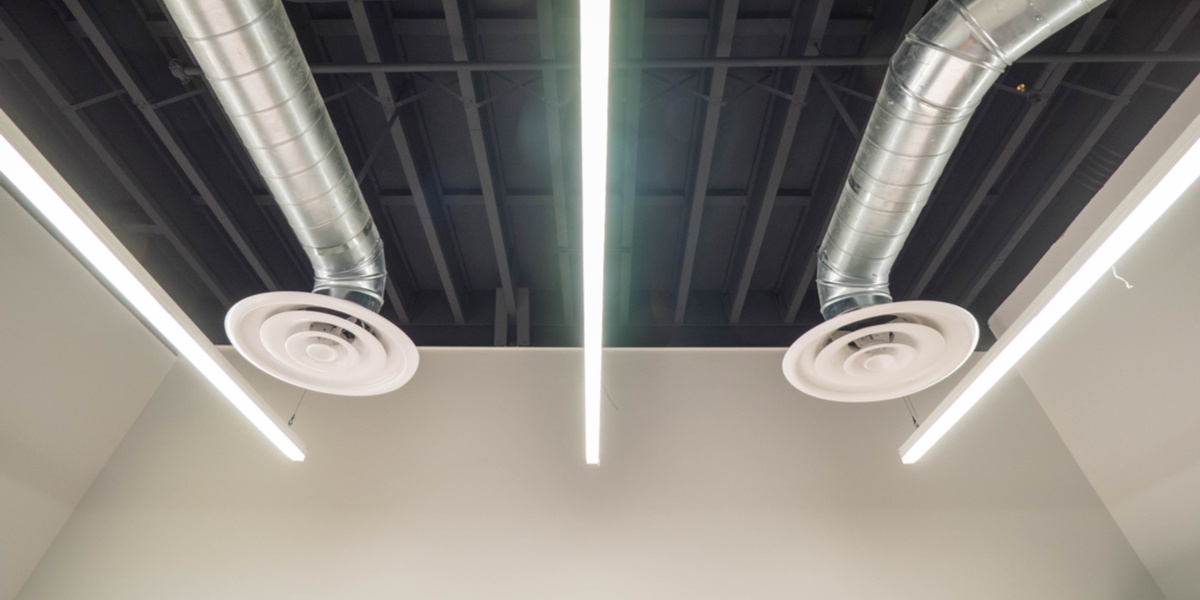Air Balancing in Ventilation Systems

Air balancing is a fundamental design skill for HVAC engineers and consultants. Depending on the intended purpose of each building area, it may require negative, positive or neutral pressurization. This is accomplished by adjusting supply and exhaust airflows: a higher air supply causes positive pressure, while a higher air exhaust causes negative pressure.
Although the ideal scenario would be to ventilate all building areas naturally, this is not possible in practice. For example, there is no way to use natural ventilation in areas that are completely surrounded by other rooms, as well as in underground levels. The purpose of ventilation can range from human comfort to facility safety: ventilation in residential and commercial settings is focused on delivering air of breathable quality, while industrial ventilation is often deployed to keep dangerous gases away from certain areas or below a certain concentration.
Indoor spaces are subject to many airflows, and they are normally measured in cubic feet per minute (CFM). We tend to think only about the outdoor air supply and the exhaust air, but consider there is also unwanted air escape (exfiltration) and air gain (infiltration). Unwanted air flows typically occur around the edges of windows or doors.
Poorly balanced ventilation systems often lead to air quality issues. For example, negative pressurization may draw in pollutants from above the ceiling or from outdoors, and air may rush in suddenly when a window or door is opened.
Design a well-balanced ventilation system.
Intake and Exhaust Air Calculation
Before air balancing calculations, it is important to know the required air supply and air exhaust. There are many valid procedures, as indicated by the following codes:
- NYC Mechanical Code, Ch. 4 - Ventilation Using Table 403.3 Minimum Ventilation Rates
- ASHRAE 62.1 - Ventilation for Acceptable Indoor Air Quality
- In the case of hospitals, ASHRAE 170 - Ventilation of Health Care Facilities
This article focuses on the NYC Mechanical Code calculation procedure. To illustrate the concept, assume a cellar room is divided into the following areas:
| ROOM | AREA | AIRFLOW DIRECTION | MINIMUM AIRFLOW | DESIGN AIRFLOW |
|
Electrical Room Trash Room Corridor Storage |
100 ft2 150 ft2 500 ft2 200 ft2 |
Supply Exhaust Supply Supply |
0.06 cfm/ft2 1 cfm/ft2 0.06 cfm/ft2 0.12 cfm/ft2 |
6 cfm 150 cfm 30 cfm 24 cfm |
The total air supply is 60 cfm, while air exhaust is 150 cfm. Since exhaust is higher by 90 cfm, the result is negative pressurization. Increasing supply to balance airflow is acceptable, since the values provided in the code are only minimum values.
Assume all intake airflows are increased to the following values, in order to prevent negative pressurization:
- Electrical room: 25 cfm
- Corridor: 125 cfm
- Storage: 25 cfm
This results in a total air intake of 175 cfm, which is higher than the 150 cfm of exhaust air. This causes cellar areas to be pressurized with respect to the trash room, preventing the spread of unpleasant odours. Since the airflow must be balanced at the end, the extra 25 cfm are released by exfiltration, but trash odour is confined to its intended location.
Troubleshooting Air Balancing Issues
If a ventilation system suffers from air balance issues, do not immediately assume the cause lies in the fans themselves. Consider that system components such as dampers can be damaged, and also that air ducts can get disconnected. When in doubt, the best recommendation is getting a professional opinion from an HVAC design engineer.
When ventilation systems are equipped with variable frequency drives for fan speed control, air balancing is simplified. VFDs can adjust the rpm of both supply and exhaust fans, to match the ventilation load while keeping airflows balanced.

Anuj Srivastava
Anuj Srivastava is a principal partner at NY Engineers. He is known for his MEP franchise market knowledge. Anuj is currently leading a team of 100+ MEP/FP engineers and has successfully led over 1500 franchise projects in the US.
Join 15,000+ Fellow Architects and Contractors
Get expert engineering tips straight to your inbox. Subscribe to the NY Engineers Blog below.



